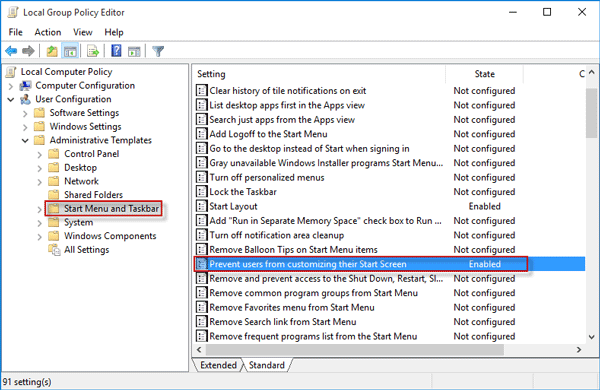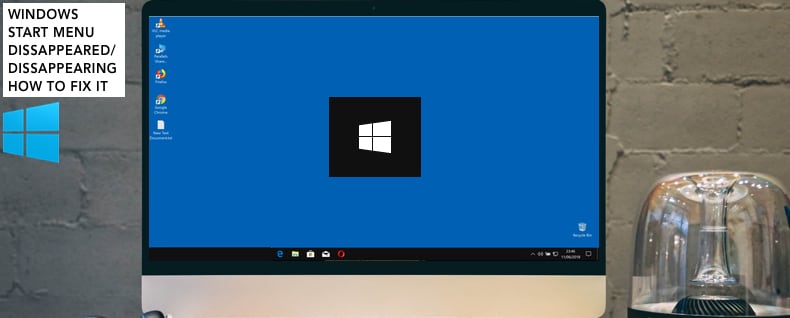

- #WINDOWS 10 PROGRAM MENU MISSING WINDOWS 10#
- #WINDOWS 10 PROGRAM MENU MISSING PC#
- #WINDOWS 10 PROGRAM MENU MISSING WINDOWS#
While it is nice to be able to quickly and easily switch between All Apps and Pinned Tiles views, the Start menu will always return to the Pinned Tiles view by default. Figure F The menu displays the new button titles. If you click the hamburger icon at the top left of the Start menu, you'll see a menu showing the new button titles, as shown in Figure F. Figure E When you click the All Apps button, the Start menu displays the All Apps list. When you click the All Apps button, the Start menu displays the All Apps list, as shown in Figure E. Figure D On the far left of the Start menu, two new buttons allow you to switch between the Pinned Tiles and All Apps views. In the upper left, you'll see two new buttons that allow you to switch between the Pinned Tiles view, which is the default, and the All Apps view. Now, when you then access the Start menu, you'll see that it displays just the tiles, as shown in Figure D. Figure C On the Settings > Start screen, turn off the Show App List In Start Menu toggle. Check the option Create this task with administrative privileges. Type powershell in the Create new task box. When the Settings > Start screen appears, locate and turn off the Show App List In Start Menu toggle, shown in Figure C. Open Task Manager, click File > Run new task. Figure B You can easily access the Settings > Taskbar screen by right-clicking on the Taskbar. When the Settings > Taskbar screen appears, select the Start tab. Delete the Windows.To access the Show App List In Start Menu feature, you right-click on the Taskbar and select Taskbar Settings, as shown in Figure B.

#WINDOWS 10 PROGRAM MENU MISSING WINDOWS#

Obviously you won't be able to see the menu, but can still interact with it. If that doesn't work, you can use another keyboard trick: Select the application window by clicking on it in the taskbar, then tap Alt + Space, which will open a menu on the missing window. With any luck, your missing window will snap back into view. Now you can simply hold the Windows key on your keyboard and tap the arrow keys. Before changing the resolution back to its previous setting, manipulate the window (maximize or resize), then go back to normal.īring the troubled window to focus by clicking on it in the taskbar (or Alt+Tab). That will force a window rearrange and the lost window should be back on display. Right-click on the desktop, choose "Display settings." Scroll down to the resolution setting, and change your display's resolution to a lower value temporarily. You can select the stray window there, and bring it back to life in two keystrokes.Īs you can see on the screenshot below, I have snapped Opera browser on the right, and the rest of my open windows are shown on the left. You can also select a different application's window, snap it left or right (first shortcut above), which will trigger Snap Assist's app split screen view, letting you select a second window to be snapped on the second half of the screen.

The program's window will be "active" but out of view for now. For Windows 10įrom the taskbar select the application you're having problems with. There are a couple of tricks to get your stray window back on screen.
#WINDOWS 10 PROGRAM MENU MISSING PC#
Restarting your PC may not be viable, because the inaccessible program window could contain unsaved data - not to mention that it's never fun to reboot without a good reason. This affects multiple programs at random.
#WINDOWS 10 PROGRAM MENU MISSING WINDOWS 10#
It can also occur when you open a program that alters your resolution, among a few others. &0183 &32 I have a client running Windows 10 Pro and about a month ago, she started to experience a weird problem, the top off the program, like the title bar and menu bar would disappear, but its more that just that, you can see the desktop behind the missing part. A number of things can cause this, such as disconnecting your laptop from a secondary display before dragging the windows back to the primary desktop. At one point or another, you're bound to run into this pesky issue: you can see an application open in the taskbar, but can't see the window on your desktop.


 0 kommentar(er)
0 kommentar(er)
